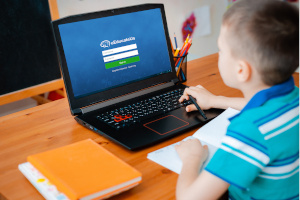Case Studies

This week, we’ve put together four case studies to outline different approaches to delivering the curriculum despite school closures. They’re not the only ways to continue to educate your students, but may help design your approach.
Case Study: School of the Air
The School of the Air has operated for over fifty years and helped educate children across the Australian outback. They use a mixture of technology to deliver classes which typically include
-
one hour direct lesson with a teacher
-
working the rest of the day through course material and tasks.
The School of the Air operates in all states and territories except Tasmania, and uses a mixture of technologies:
-
Interactive Distance Learning (IDL) - a computer application students and teachers use to communicate directly to students. This allows for questions and answers heard by the whole class.
-
Electronic whiteboard where the teacher can deliver finer points of the lesson
-
Pre-prepared course material (e.g., MS Word document or PDF) which students can download for further information.
Students and teachers login to IDL at the beginning of the day, where the class is taught and students can ask questions. From there, the students can spend the rest of the day on their tasks, be they reading class material, watching videos, or completing work. Parents also get involved, by making sure their children have dedicated desks to work, and keep them on track during the day.
Case Study: Tyers Primary School
Tyers Primary School in Gippsland, Australia was an early adopter of our uEducateUs software, which integrates with the Victorian Education Department CASES21 system. They’re taking a mixed approach to remote learning using uEducateUs and Google Education.
-
uEducateUs tasks are used to notify parents of assigned work held on other platforms, and set due dates for work to be submitted. Parents can then follow the work their children have completed.
-
Teachers utilise additional third party applications to make education material, including class information, downloads and links to reference material available.
This method is self-directed, but can be monitored by parents. A student starts working via Google Education, completing course work as required by the teacher.
Case Study: Morwell Central Primary School
Morwell Central Primary School also uses uEducateUs but is taking a different approach. Most students have smartphones, but there’s no guarantee they have access to a computer. Their approach works like this:
-
Teachers create uEducateUs tasks with study material, which may include links to videos or written content. A task can be an assessment, assignment, homework or a quiz. Teachers can also create tests.
-
Students without access to a computer can login on their smartphone and read through the tasks and complete them on paper.
-
Students photograph their work using their smartphone, and attach the image to the task, and submit it for assessment.
This method has the benefit of keeping all tasks and work central, which means students and parents can monitor progress with built-in graphs and reports.
Additionally, teachers can create reports on their classes, and have student records at their fingertips for report writing and parent/teacher interviews.
Case Study: Using uEducateUs for communication and lessons
uEducateUs also has communication and announcement features which can help run lessons.
In this scenario, we’ll use uEducateUs features to run a lesson. There’s three that are of interest:
-
Tasks - teachers provide learning material for students which can include links to videos, class descriptions, and downloadable attachments.
-
Announcements - Teachers create an announcement that’s distributed to the class, and outlines the lesson as if the teacher is delivering it in person. Students can reply to the announcement with questions that are broadcast to the whole class.
-
Conversations - Students and teachers can converse about the class in uEducateUs, which works a little like SMS text messages. These can be one-on-one, or expanded to include other students or teachers.
|
At this time, uEducateUs cannot deliver audio/video content but we've written a blog post that may help. Read Post |
Announcements and Tasks are the equivalent to the preparation teachers undergo before class, but in this case, everything is recorded within uEducateUs. This has four benefits:
-
Students can always find the assigned work, and background material, so nothing is lost
-
Teachers can assess completed work which is then delivered to parents and students, who can also view progress graphs
-
Teachers and school administrators can create reports on class and student progress.
-
Report writing is easier because students’ prior work is always at teachers’ fingertips.
Conclusion
There are a number of different approaches to take, but as the School of the Air has proved for over fifty years, it’s possible to deliver a school curriculum remotely. Once processes are put in place, remote learning can be seamless and productive.
Learn More
Learn more in the uEducateUs Knowledgebase